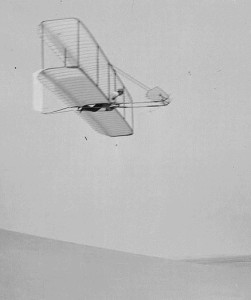A Squirrel can fly very high but it’s not easy to measure it’s height directly.
We can take advantage of geometry in order to estimate the height of a Squirrel (or a tree or a building for that matter).

If we look at the above right angle triangle you can see a way of naming the sides. Angle marked in red is the angle Θ (Pronounced Theta, it is the Greet letter Capital Theta). The side of the triangle that is right next to the angle Θ is called “adjacent”. The one across from it is called “opposite”. And the one that is opposite the right angle (90 degrees) is called “hypotenuse”.
From this there are three basic trigonometry functions involving sine, cosine and tangent:
sinΘ = opposite/hypotenuse
cosΘ = adjacent/hypotenuse
tanΘ = opposite/adjacent
It’s possible to get two observers to form a right angle triangle with the Squirrel as follows.
If the observer on the left is running underneath the Squirrel then the triangle will approximate a right angle triangle.
So it is possible to have the observer on the right (or some other observer) estimate the angle Θ. It is also possible to measure the “adjacent” side of the triangle since it is just the distance between the two observers. We are wanting to know the length of the “opposite” side of the triangle.
If we look at the trig functions above, there is one that includes Θ, “opposite” and “adjacent”. It’s interesting for our problem because it references the two entities we know (“adjacent” and Θ) and the one we don’t know (“opposite”).
tanΘ = opposite/adjacent
Using algebra we can rearrange this equation to issolate the unknown variable:
tanΘ adjacent = opposite (multiply both sides by adjacent)
opposite = tanΘ adjacent (reversing order)
We now have a formula for calculating the height of the Squirrel. We take the tangent of the angle Θ and then multiply it by “adjacent” which is the distance between the two observers.
For example, if the angle observed was 28 degress, and the two observers are 45 meters apart, then we get a height of 0.5317 times 45 meters which is 24 meters.








